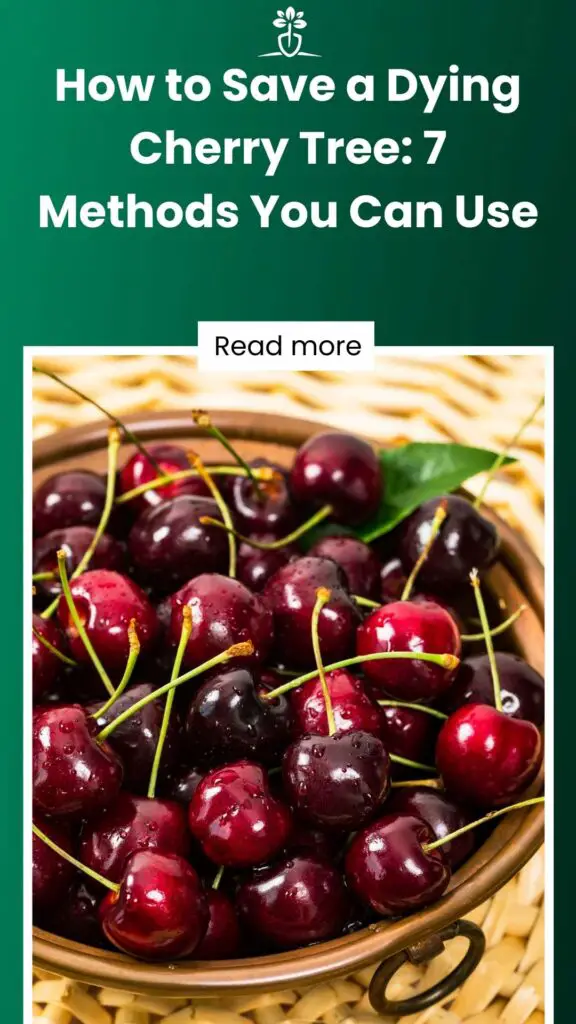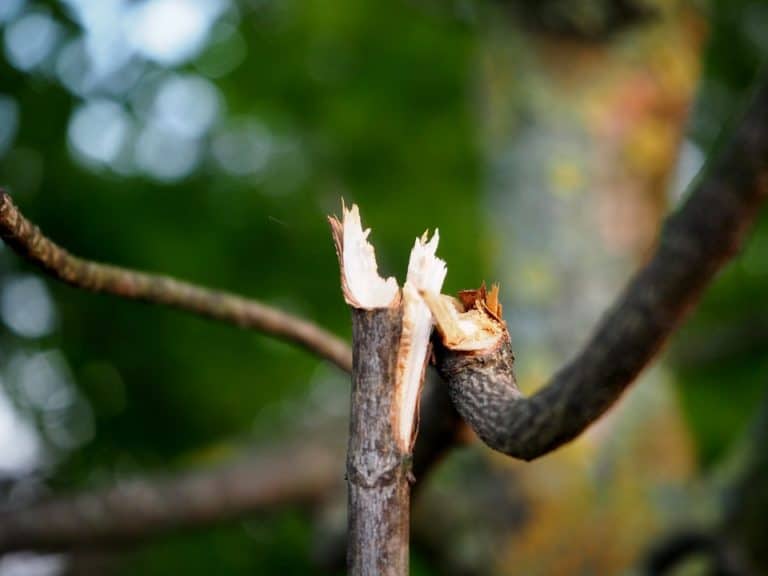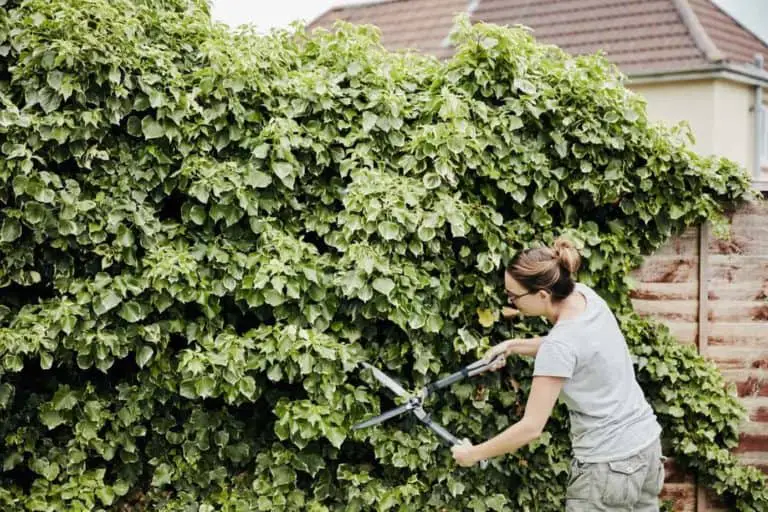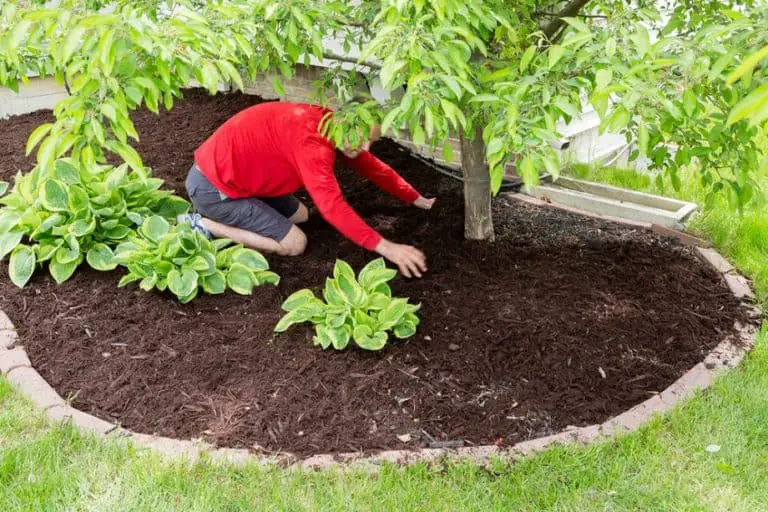How to Save a Dying Cherry Tree: 7 Methods You Can Use
Planting cherry trees brings **joy** with their **beautiful** blossoms, **delicious** fruits, and **lovely** leaves. Yet, they **easily get diseases**, decay, and deformities, creating a real **headache**.
But never fear! These problems are easy to identify and, with time and dedication, are just as easy to treat.
There are several diseases that kill cherry trees. Each has very distinctive symptoms, and most are easily treated. Here we list seven things to look out for in your cherry trees and tips on how to treat them.
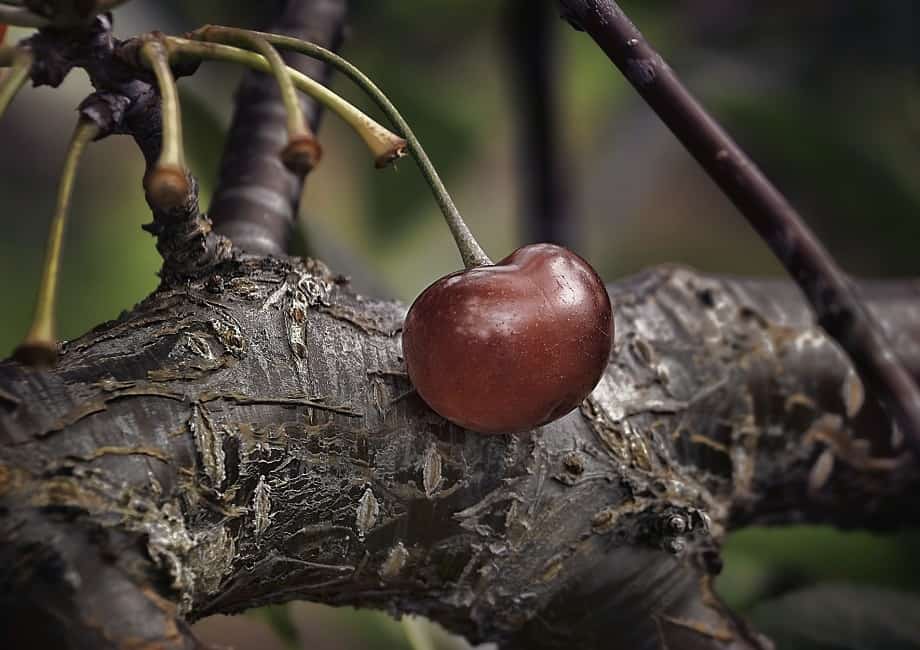
Contents
Frost Damage
Frost damage happens during extended periods of extremely cold weather. Outer leaves of the cherry tree turn brown and drop, fruit drops and dieback may occur.
Some species are built for colder climes than others and will do better in cold weather, but any tree can fall victim.
The best way to protect your trees is to wrap them using a tree wrap. Sufficient moisture can be given to the trees by adding a layer of mulch around their base.
Canker Sores
Sunken lesions on the cherry tree stems fill with necrotic material and infected areas ooze sap, spreading the infection to other parts of the tree.
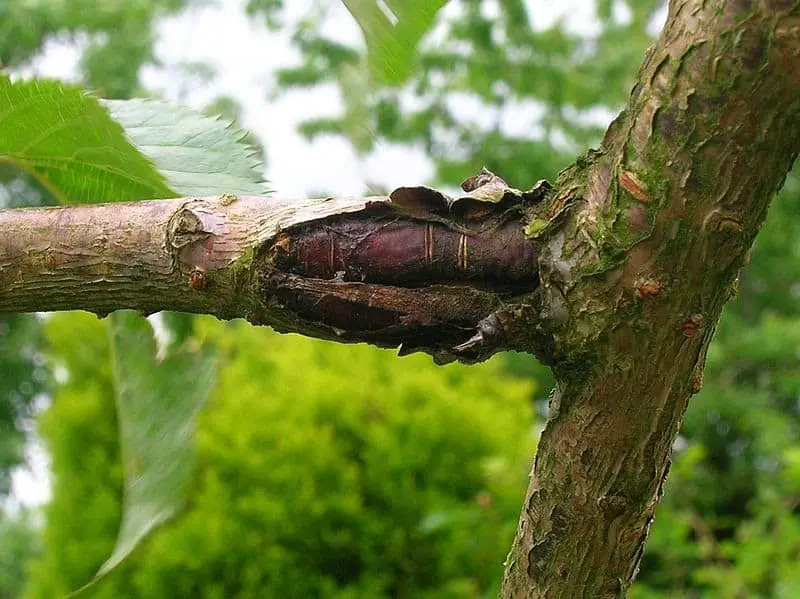
If your tree is infected with cankers, the foliage will be wilted, brown and falling. A severe canker infestation can kill the branches and cause girdling, which will threaten the tree’s life.
Cankers can be prevented with proper care and sanitation, but there isn’t a known cure. Once a tree has been infected, there isn’t much that you can do to revive it, so be sure to look after it well. It’s a good idea to sanitize your pruning tools between uses to help avoid spread.
Cherry Leafspot
Leafspot is a fungal disease that gives the leaves a spotty appearance. It affects the tree’s stems, foliage and fruits and causes the leaves to turn brown and drop off. If very severe, a tree could lose all of its leaves. This will ultimately lead to the death of its branches, energy loss and stunted growth.
Like cankers, Leafspot is avoidable if proper cleanliness is practiced. Keep the ground around the tree free from debris, thoroughly clean your pruning gear, and apply fungicides to keep Leafspot at bay.
Brown Rot
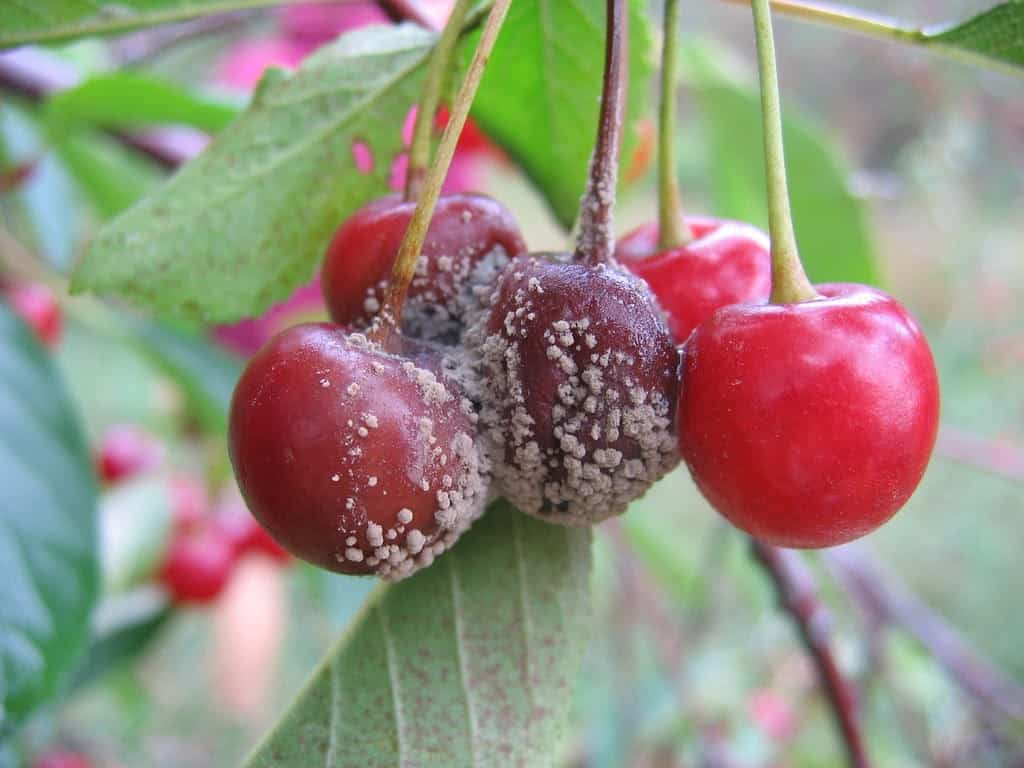
This is a deadly fungal disease that attacks cherry and other fruit trees. Blossoms die, leaves turn brown and sunken lesions appear on the twigs. Infected areas ooze sap and spores form on dead flowers and cankers. These spores are spread by rain, wind and insects.
As the name suggests, Brown Rot causes brown spots to appear. These can cover the entire surface of the fruit. When very severe, branches die back.
This can be prevented by applying copper fungicides to the tree. It can also be controlled with adequate irrigation at the base of the tree rather than overhead. It’s also important to keep foliage thinned to allow sufficient airflow.
Black Knot
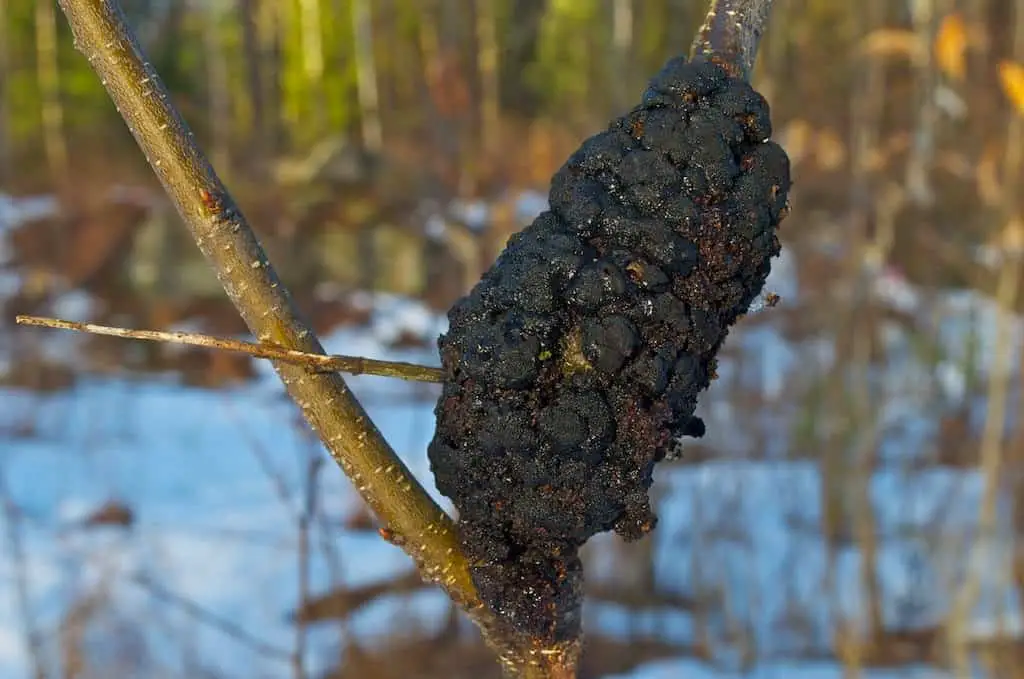
Black Knot appears as hard, black lumps, or knots, that grow if left untreated. These knots appear all over the tree and may be covered in a green velvet-textured fungus.
Diseased twigs bend under the weight of the growths and infected branches may wilt, stop producing leaves or die altogether.
In warmer weather, mature knots produce spores. These spores are then carried to vulnerable plants by wind and rain. Germination and infection can occur within six hours in optimal wet, warm conditions.
Treat Black Knot easily by pruning your cherry trees 3 to 4 inches below existing knots. Do this when the tree is dormant, and remember to sterilize your tools before and after pruning. Burn or bury all of the infected material you remove to ensure that the disease doesn’t spread to healthy trees. If the infection has become severe, remove the tree completely.
Powdery Mildew
A common problem in areas of high humidity, if your cherry tree is suffering from powdery mildew you will notice light-colored patches of powder appearing on the young leaves. Infected leaves will look distorted, twisted or pale.
The disease thrives in humid conditions and spreads through spores lying dormant in the leaves. Rainfall releases them and wind carries the spores to other leaves and other trees. Unnecessary watering and early irrigation promote the spread of infection.
A two-week delay in irrigating your tree can help discourage the spread of the disease and regular pruning will encourage airflow and leaf dryness. Fungicides will help prevent any mildew, but will not cure it once it’s set in.
Crown Rot
Caused by a soil-borne fungus that can live in soil for many years, this is often seen in wet conditions and heavy soils. Little can be done once the disease takes hold.
The crown or lower stem of cherry trees may show dry rotting at or near the soil line. Other symptoms often go unnoticed. Infected areas may become discolored, usually dark or tan. This is indicative of dead tissue and, as Crown Rot progresses, the plant will wilt and quickly die.
Sanitize the area around infected soil to prevent the spread of the disease. Deal with any soil drainage issues and avoid allowing the soil around the tree to get overly wet.
Water trees only when necessary, letting the top inch or so of soil dry out between watering. Cut away infected bark and remove the soil from the tree’s base down to the main roots, allowing the crown to dry out.
These are just some of the more common problems that face cherry trees. With all of them, prevention is better than cure, so it’s important you take good care of your trees and choose the right variety for the climate, provide optimum growing conditions for them year-round, and keep a close eye on them so that you can nip any diseases in the bud before they nip your cherry tree in the bud.
